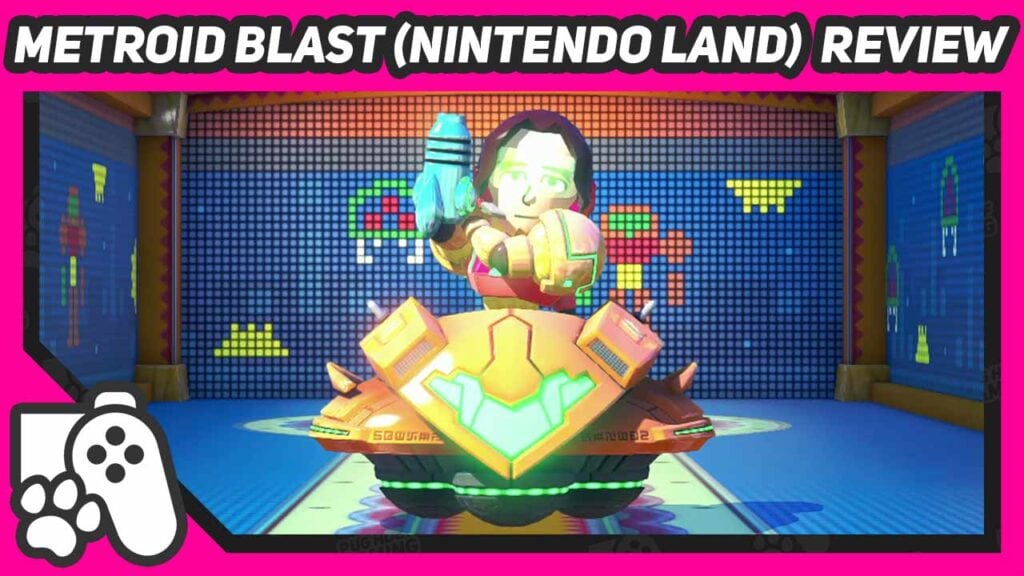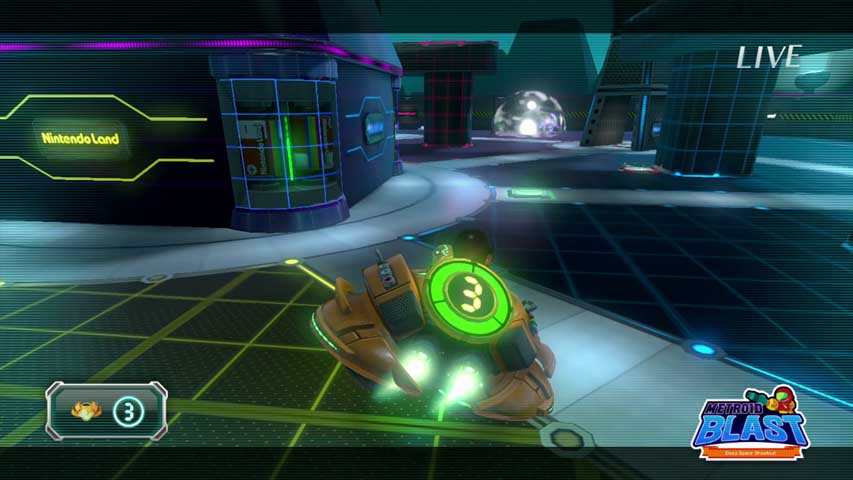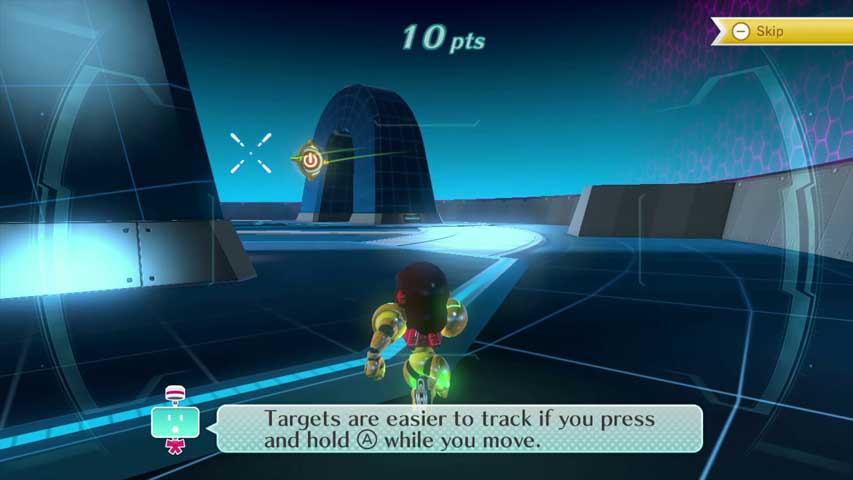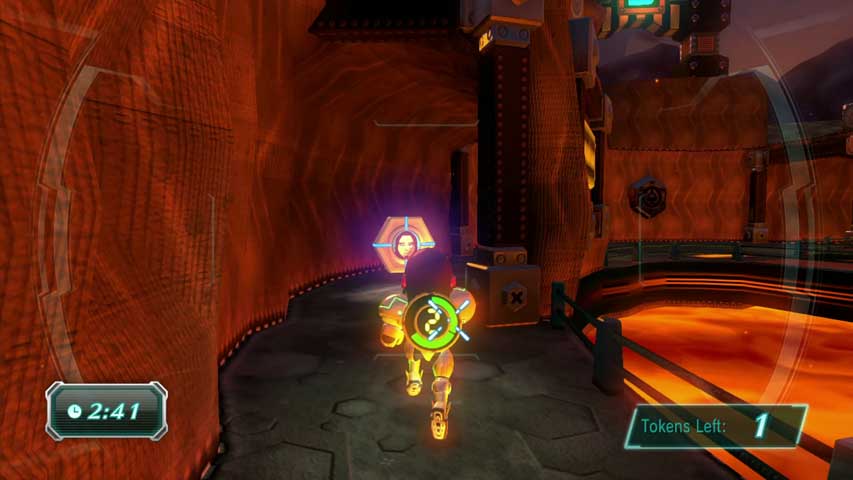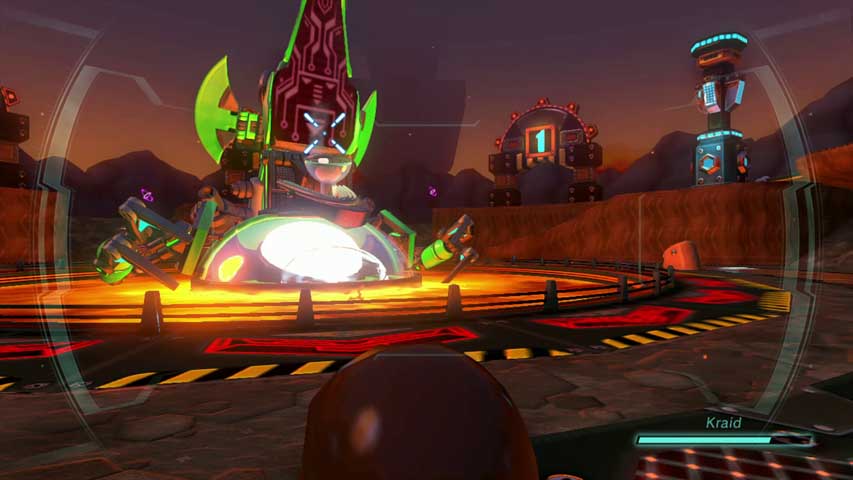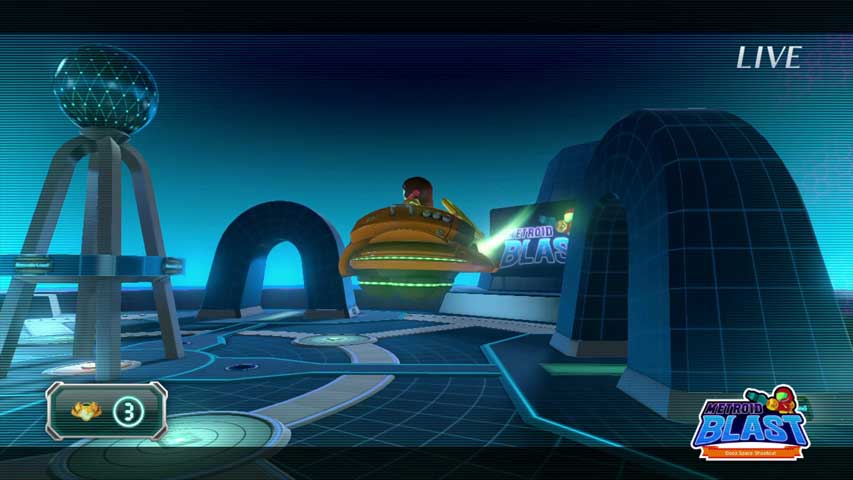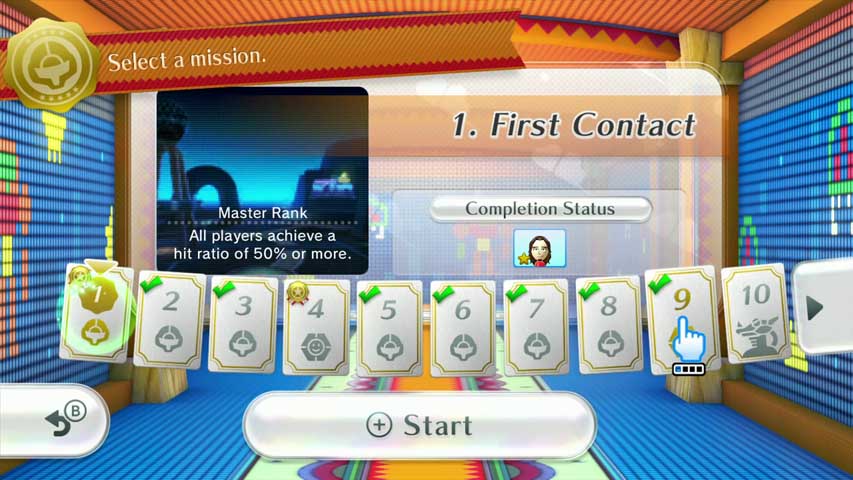This week, I thought I’d have a little bit of fun. The Wii U is a console close to my heart – Nintendo’s first HD system, one that was taken away from us far too soon, and home to a lot of great games. The Switch might have had shinier versions of most of the Wii U’s exclusives, but there’s one title I’d love to see again – Nintendo Land.
This launch title was a veritable cornucopia of Nintendo-related fun for 1 to 5 players. Featuring plenty of Nintendo’s major, and not so major, franchises; this friendly introduction to the Wii U’s unique Gamepad was arguably one of its best examples of how to use the screened peripheral to its fullest potential. Contained within this game are numerous types of asynchronous multiplayer gameplay, and plenty of single-player experiences too.
Nintendo Land: Metroid Blast
Nintendo Land is split into several different minigames, or attractions as the game calls this unusual theme-park…themed game. But, for the purposes of this series, we are of course focusing on one particular segment of this amusement establishment – That is, of course, the Metroid Blast attraction. Nintendo Land Metroid Blast was first seen under the name Battle Mii during its appearance during Nintendo’s E3 2011 reveal of the Wii U, but was originally envisioned as a Starfox-related attraction. It definitely does fit, and I swear some of this game’s sound effects are taken from Starfox 64. In any case, Metroid was picked as the final theme as the flying vehicle piloted by the Gamepad user was a better fit for Samus’ Gunship than the iconic Arwings of Starfox. That makes this game the first game and only ever, where you directly control Samus’ ship.
Controlling the Gunship with the Wii U Gamepad is simple, as the Left Stick moves and strafes, the Right stick climbs, dives and turns, whilst the player tilts the Gamepad to adjust their aim. Pressing either of the sticks in will dash, allowing the player to dodge attacks or just get around quicker, the L and ZL shoulder buttons will zoom the view in for more accurate aiming, and the R and ZR shoulder buttons will fire. Holding the fire button will fill up a meter which, when full, the player can release the button to fire a missile.
Players also have the option to play the game outside of the Gunship, too – But they will need to use a MotionPlus-enabled Wii Remote and Nunchuck. On foot, the player moves with the Nunchuck stick, uses the Wii Remote to move the reticule, or hold A while moving the Remote to look around. The B trigger is used to fire, and if held down and released when the meter is full, a bomb will be thrown that causes a massive spherical explosion. Z on the Nunchuck will activate Morph Ball mode, which is mostly useless, while the Nunchuk’s C button is used to zoom in for accurate aiming.
Three game modes are available – Assault Mode, Surface-Air Combat, and Ground Battle. Assault Mode is the main campaign style mode that can be played in single-player or cooperatively with four other players as they aim to complete 30 missions that range from destroying waves of enemies to collecting tokens littered around stages, and even battling some tricky, yet familiar bosses. Players have three life points, that are depleted once hit; 0 life points mean the player is out – Once all players have perished, it’s Game Over. However, life-replenishing hearts are sometimes found in crystals around the various arenas, or dropped by some enemies. The creatures throughout Metroid Blast are mechanical versions of some of Metroid’s more recognisable enemies such as Geemers and Zebesians, as well as some new foes created just for this game; and players will be pleased that both Ridley and Kraid make an appearance as truly tricky boss battles. Creatures are damaged by hitting their coloured targets – Blue targets turn into Yellow targets once shot, which are then turned into Red targets. Shooting red targets will defeat an enemy, while some tougher foes have multiple targets that need to be hit before an enemy is destroyed. I particularly enjoyed the Kraid boss fight, where you have to shoot a number of weak points to make his mouth open, before firing a bomb or missile down his throat to destroy him from the inside.
If you’re good, you’ll be able to finish all 30 missions in about 4 or 5 hours, but the game does register whether you’ve finished missions in the air or on foot, plus there are also Master objectives that add some bonus challenge and bragging rights. Some missions are definitely easier depending on whether you’re in the Gunship or On Foot, and it definitely helps to have the full complement of 5 players helping you out. Of course, as you can only ever have one Gamepad, the remaining four players will need to play using a MotionPlus-enabled Wii Remote and Nunchuk.
The remaining game modes are competitive multiplayer. In Surface-Air Combat, 2 to 5 players can battle in teams consisting of a player-controller Gunship vs up to four players on foot. Meanwhile, Ground Battle pits 2-4 players against each other in On Foot combat, where players have to collect the most tokens, shooting the other players to steal theirs, with the winner having the most once the timer runs out.
I didn’t have a chance to get some players over to play some multiplayer for the purposes of this video, but over the last decade, I have spent so much time playing all of these modes with friends and family. Both Gunship and On Foot play modes are evenly matched, and it’s a whole heap of fun – Definitely one of the best of the minigames within Nintendo Land.
Of course, the elephant in the room is that this is nothing like a Metroid game. Other than players controlling their Mii’s dressed as Samus, and fighting recognisable foes from the series, there isn’t a great deal in common with the main series. However, this game is a lot of fun – especially if you have a few friends over. The 30 missions in Assault Mode are a hefty chunk of action to enjoy, whether in single-player or multiplayer play, and there’s potentially limitless fun to be had in competitive multiplayer.
The visuals are deliberately simplistic, with chunky designs meant to resemble animatronic figures, and overall, it’s a fun take on the usually dark Metroid universe. The music is a bright, orchestral take on several Metroid themes, and definitely brings a sense of fun to the game, without being too twee and out of place.
For a small part of a title based around mini-games, I can’t fault Metroid Blast for its simplistic nature, nor can I be angry at it not being particularly Metroid-like in its gameplay. I did find that you really need to be particularly accurate with your shots to hit some of the absolutely tiny targets the enemy throws at you, but other than that, I don’t have too much criticism.
After all, this is a minigame designed to attract all types of players and abilities to Nintendo’s Wii U system; and on that remit, it succeeds. It’s a joyful game indeed, as is the whole of Nintendo Land itself; while Metroid’s appearance here as one of the main minigames alongside games based on The Legend of Zelda and Super Mario, at the very least is a reminder of how important the series is to Nintendo’s history. I’ve played this game with Metroid fans and people who have never heard of the series – And we’ve all had fun together, whether that’s as a team or competitively.
You could ask what the point was of covering this minigame as part of this series, as this isn’t strictly a Metroid game in any way, shape or form; but I feel that Nintendo Land: Metroid Blast is worth covering for context’s sake, plus; I will find any excuse to boot up Nintendo Land for a quick play. The Metroid series was more or less dormant at this point in 2011, a year after Other M and five years before the next Metroid-related title. The Wii U didn’t see a proper Metroid game at all during its short lifespan – The first time the series has skipped a generation since the Nintendo 64.
And that title released five years later was possibly almost as divisive as Other M, for next week I am reviewing Metroid Prime: Federation Force. The series branches out with the first game to feature online co-op multiplayer and barely any sign of Samus Aran. Tune in to find out how that pans out.
